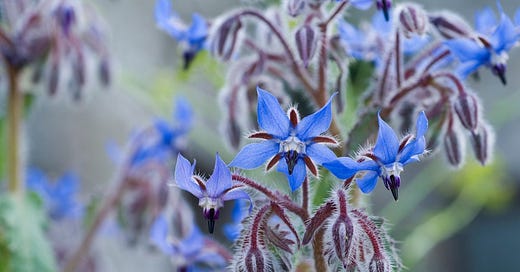Borage is an annual flowering herb from the Boraginaceae family. It traditionally derives from the Mediterranean region, and it is used for medicinal, edible, and ornamental purposes. It goes by several other names such as starflower, the herb of courage, bugloss, and bee bread. And this plant has a striking appearance with its clusters of delicate blue…
Keep reading with a 7-day free trial
Subscribe to Decentralized Media | Redpill Project to keep reading this post and get 7 days of free access to the full post archives.





